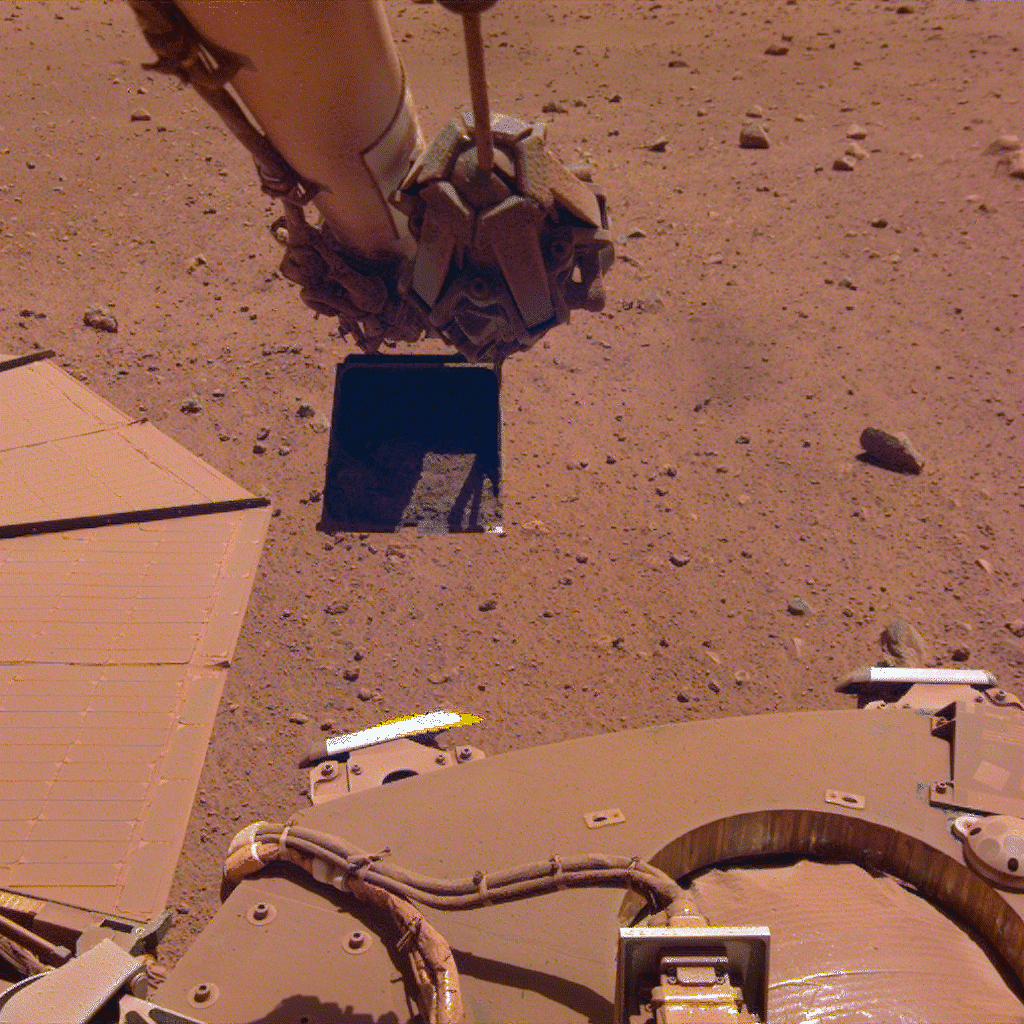The dust piled up everywhere. Pushed around by the Martian winds, it stifled the InSight lander, whose solar panels — the source of its power — have been coated in red grime. Now, NASA has announced a step in the right direction for the sedentary probe: By commanding it to drop dirt on top of the dust, they managed to dislodge some of it, boosting InSight’s power supply.
The counterintuitive means of clearing the panels couldn’t have come at a better time. Mars is approaching its aphelion, the farthest point in its orbit from the Sun, so InSight already needed to conserve energy. Though the team had prepared for lower power usage during this point — InSight’s work runs through at least 2022 — its data collection had stalled due to how dirty the solar panels had become. In February, the panels were operating at just over a quarter of their full capacity, according to a NASA release.
The team tried other methods to get the dust off the machine, which sits on a Martian plain 183 million miles away from any Swiffer. They tried revving the motors used to open the table-sized solar panels, thinking the vibrations would rattle some dust off. That didn’t work. Armchair observers suggested that Ingenuity, the Martian helicopter, could fly over and blow the dust off (never mind that Ingenuity is as far from InSight as the Mississippi is long).
But the recent trick succeeded. Using Insight’s robotic arm, the NASA team scooped up some dirt from Mars and poured it on top of the dust that had settled on the panels. When those grains of sediment hit the panels, they bounced off, taking the smaller dust particles with them, boosted by 32 km-per-hour Martian winds.

It wasn’t long ago that things were looking bleak for InSight, which arrived on the Red Planet in November 2018. This January, the Martian “mole” component of the lander — basically an excavator, which was supposed to delve up to 10 feet into the planet’s surface and take temperature readings — was abandoned after getting hopelessly stuck. A month later, just before Perseverance rover’s arrival on the Red Planet, the InSight team announced the decision to delay some of the craft’s work, as the Martian winter meant less power for the machine.
The dusting-with-dust approach has given the lander back about 30 watt-hours of energy per Martian day, according to NASA. “We weren’t sure this would work, but we’re delighted that it did,” said Matt Golombek, a member of the InSight team, in a NASA release. The power bump doesn’t mean InSight can work at full steam ahead through the Martian winter, but it buys the team a few more weeks of operation prior to the reduced hours. It’s also worth remembering that Insight’s solar panels weren’t meant to survive this long in the first place, much like Ingenuity, the Martian helicopter, and Curiosity, which is now 106 months into its originally planned 23-month mission.
I’d say they don’t quite build them like they used to, but clearly, NASA’s still building its Martian machines quite well. A little creativity has kept science going strong on the Red Planet.
